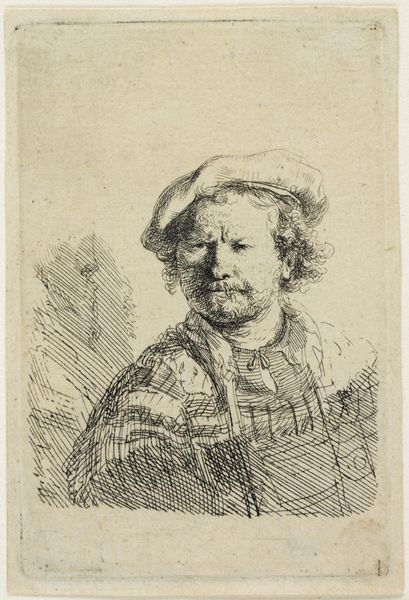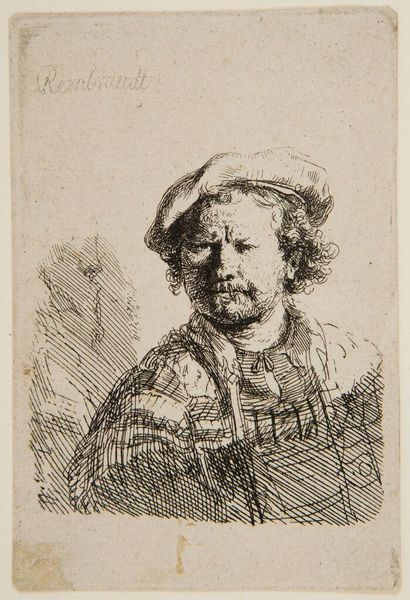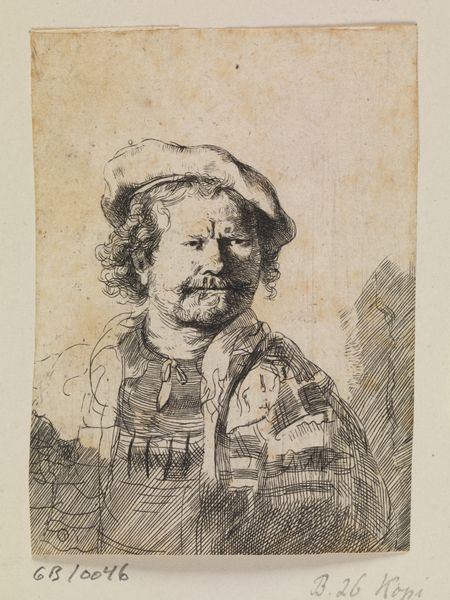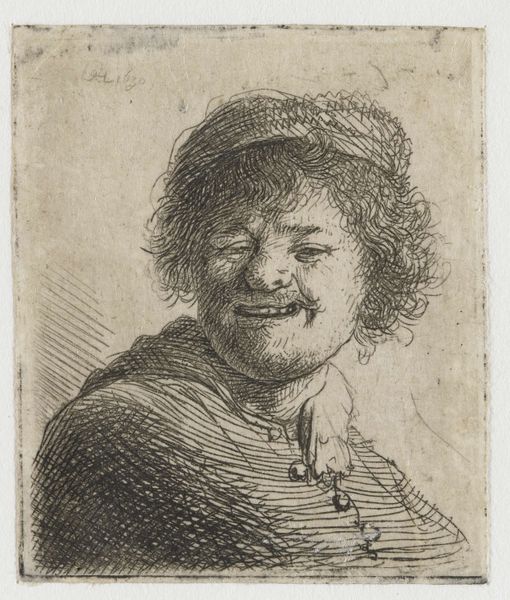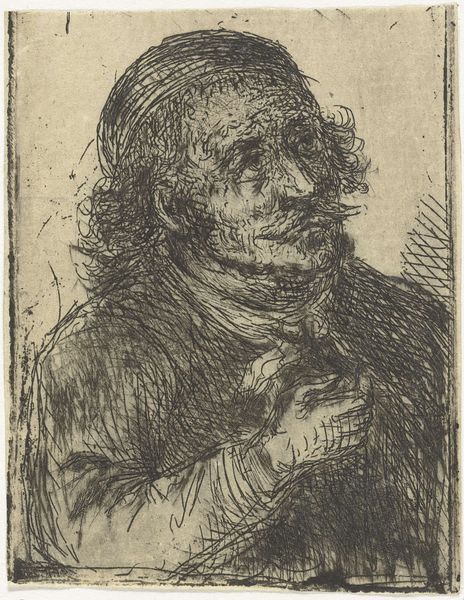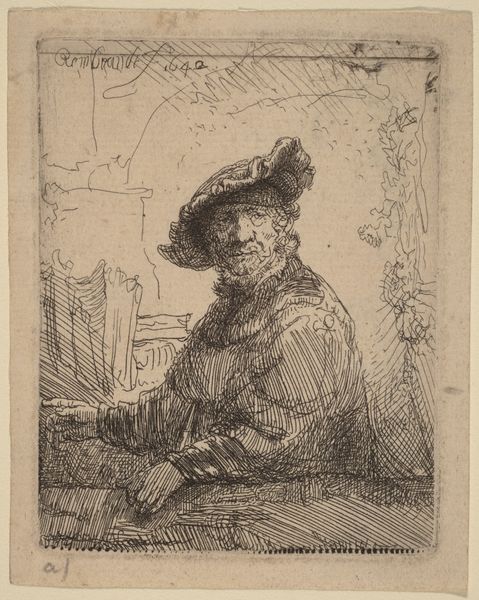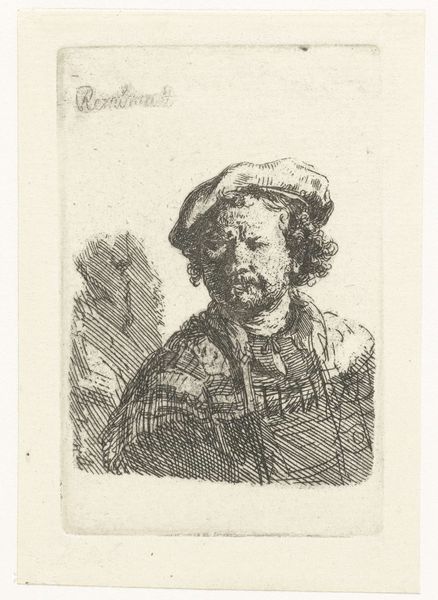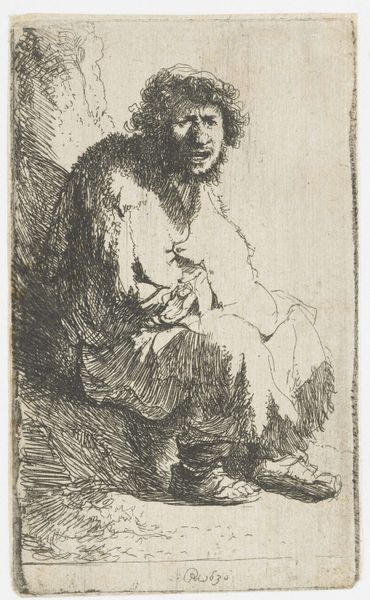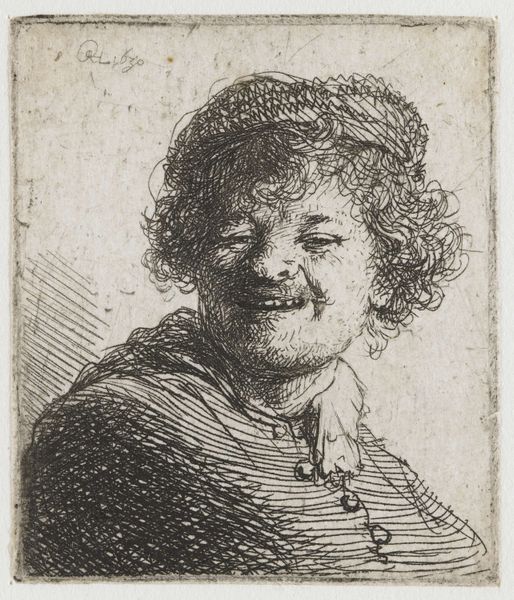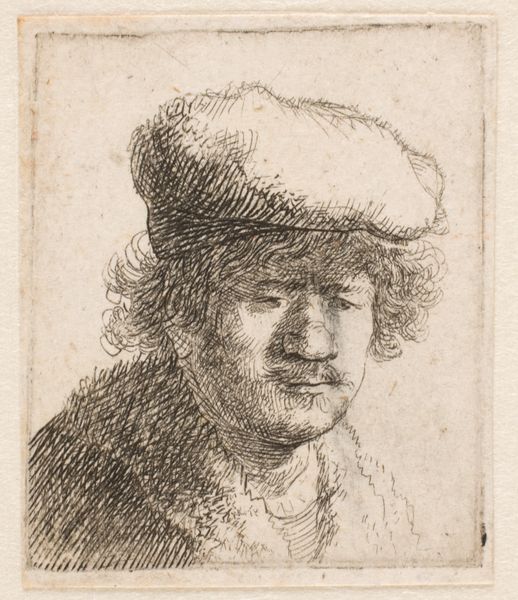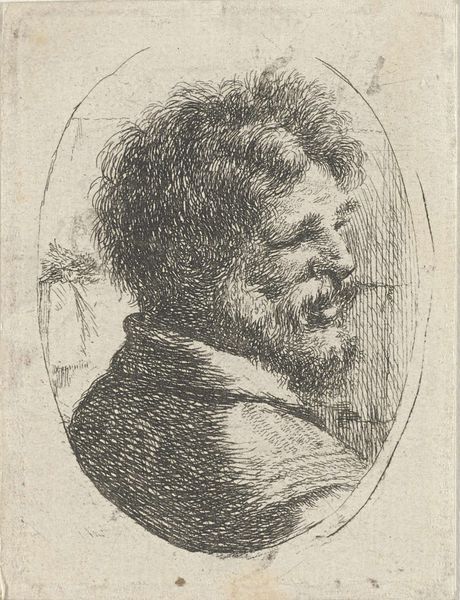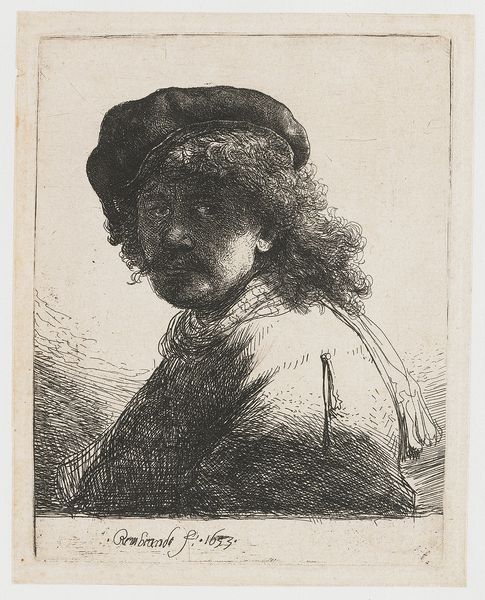
print, etching
#
portrait
#
self-portrait
#
baroque
#
dutch-golden-age
# print
#
etching
#
figuration
#
line
Dimensions: 10 x 6 cm
Copyright: Public domain
Curator: Looking at Rembrandt van Rijn's "Self-portrait in a flat cap and embroidered dress," etched in 1642, what is your initial take? Editor: Restrained intensity. It’s a small print, but the cross-hatching gives the figure real weight, and that gaze… it holds you. Curator: Indeed. It's fascinating how Rembrandt presents himself. The flat cap, the embroidered dress...it feels like a performance, doesn’t it? Clothing of this nature signaled both a level of status and artistic persona in Dutch society. Editor: Agreed. Formally, note the interplay of light and shadow. See how the lines vary in thickness and density. This technique allows certain areas to step forward. What would you say is being accented in terms of light in this picture? Curator: His face most obviously, directing us to the piercing eyes that engage the viewer immediately. This directness connects with the history of self-portraiture and representation. It's as if he's asking, "Who do you see?". Does that resonate with any archetypes or cultural associations in your mind? Editor: There’s an element of the brooding artist archetype—someone contemplating existence, observing rather than participating. Curator: Certainly! That hat became a common symbol of artists around this period. One interpretation suggests the beret carries implications of ingenuity or, conversely, lack of good judgement. What does this ambiguity tell us? Editor: Maybe it's simply the garment in closest reach, used practically to direct attention, the most basic of framing devices. However, Rembrandt's use of line creates a subtle visual harmony within what initially appeared a chaotic composition. Notice the way his right sleeve's shape is mimicked around his cheek line. It leads my eye back into his. Curator: Yes! It's a dance between truth and representation. Consider how subsequent artists took the "artist in a beret" look, referencing this specific identity. We project qualities onto images, informed by time, place and memory. Editor: The very act of looking is already an interpretation! It’s that interplay of self-perception and projected identity. Thank you for lending such insightful clarity on those themes today. Curator: My pleasure, hopefully this provided deeper engagement into the cultural narrative of symbols in art.
Comments
No comments
Be the first to comment and join the conversation on the ultimate creative platform.
